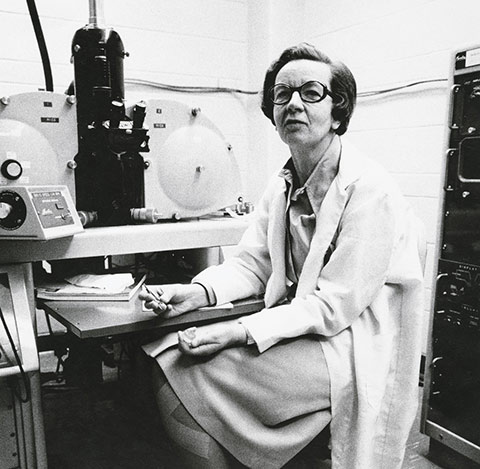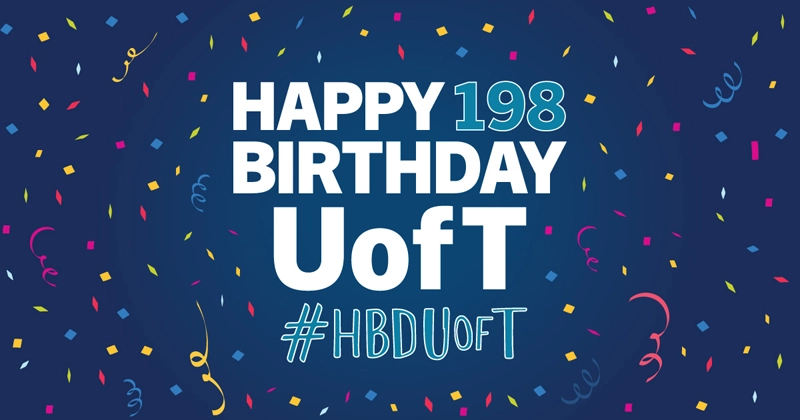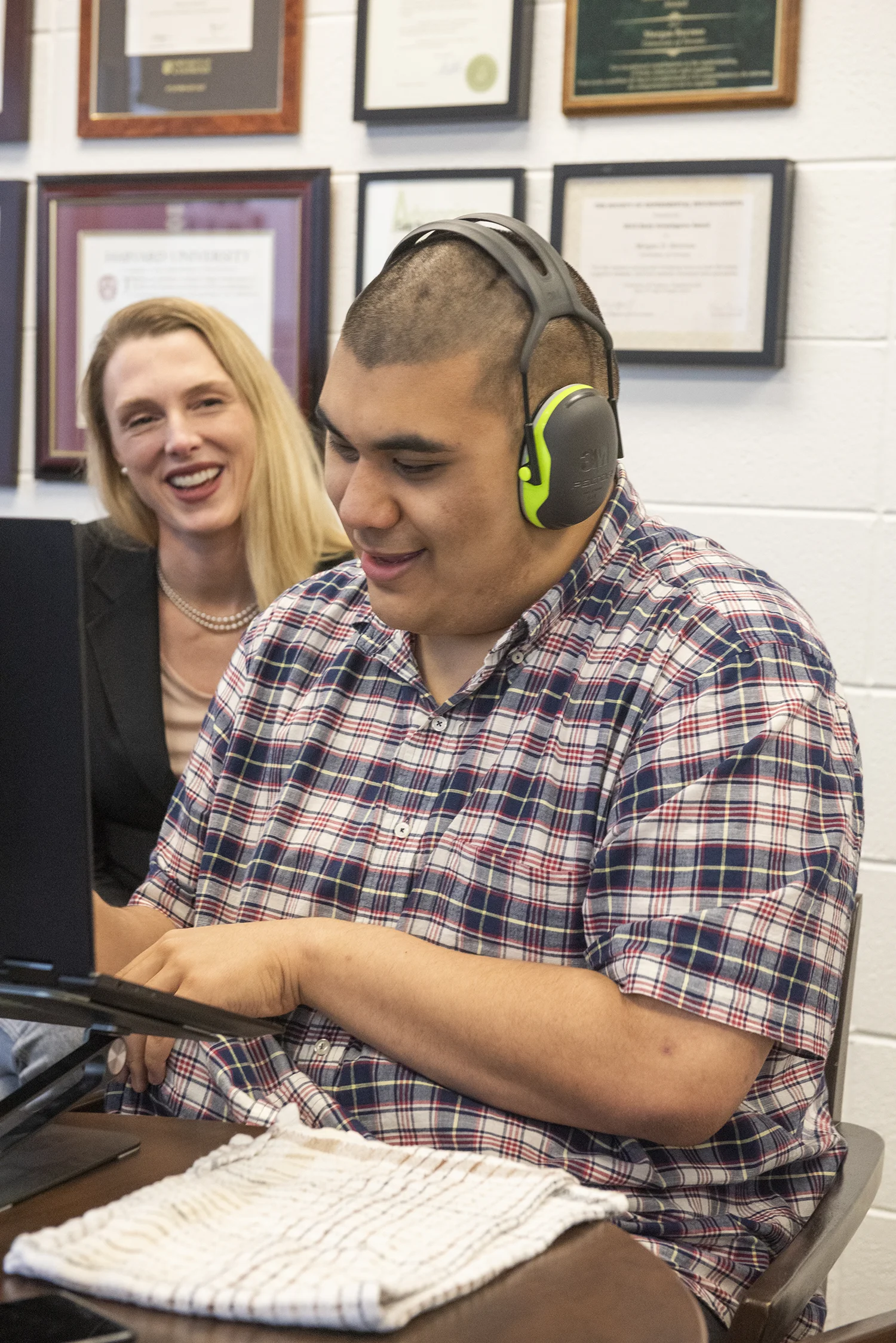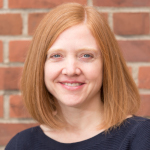Berlin in the 1920s was the vibrant cultural hub of Germany. Although the city was wounded, both financially and emotionally, by the First World War, it possessed a fervent intellectualism. Post-expressionism and Bauhaus architecture were taking hold, and science was pre-eminent – Einstein, working in Berlin, had won the 1921 Nobel Prize for physics.
It was here that the late Ursula Franklin – physicist, public intellectual, pacifist – had spent her childhood. Born in Munich in 1921, she was the only child of Albrecht Martius, an archeologist, and Ilse, an art historian. “My parents were intellectuals in the real sense of the word,” she said to CBC Radio in 1986. “Their joy came not from possessions and status, but from the life of intellect and theatre and books and talking.” Monthly trips to the Berlin Philharmonic (they went to the more affordable dress rehearsals) ignited in her a lifelong passion for classical music. Beethoven’s works, under renowned conductor Wilhelm Furtẅangler, were some of her favourites. One of her parents’ closest friends, physicist Hans Kuppenheim, fostered her love of science and interest in math more than anyone else. “I was interested in knowledge. I was always fascinated by how things worked. I think I must have said more ‘whys’ in my childhood than probably many kids, but I got answers,” said Franklin of her parents’ attentiveness. “And out of that I had this great pleasure of putting things together, which has never really left me.”
If her parents fostered her intellectual curiosity, tragedy shaped her course. Franklin’s mother was born Jewish (although she had switched to Lutheran early in life) – which meant the entire family would be targeted by the Nazis during the Second World War. Franklin was brought up in her father’s faith, Protestantism. The Nazi Party’s rise to power in the early 1930s cast a nefarious shadow over the Franklins’ home. “It put the household more or less permanently into darkness. My father, coming from a very old and very distinguished German family found it very difficult at first to think of immigration. The evilness of it was very clear to my mother very early, but my father so late that in fact it was impossible, either for them or for me, to leave Germany in spite of frantic attempts.”
Of the trauma, Franklin spoke only five words: ‘We survived it. But just.’
Indeed, she had been offered a scholarship to attend university in Britain, but the British visa was contingent on the applicant being 18 years old. Franklin turned 18 on Sept. 16, 1939. Germany invaded Poland on Sept. 1. “It was just three weeks too late,” she said, speaking emphatically, to CBC Radio. “So we all got stuck during the war in Berlin in various camps.” She was removed from the University of Berlin where she had been studying chemistry and physics in 1943, and thrust into a forced labour camp. She and her parents would remain in separate camps for the last year and a half of the war.
Of the trauma, Franklin spoke only five words: “We survived it. But just.”
Arriving in Canada
Following armistice, Franklin finished her undergraduate studies, then earned a PhD in experimental physics in 1948 from the Technical University of Berlin. At first, she was eager to stay in Germany, thinking it her obligation. But it slowly dawned on her that there would not be the drastic post-war changes to Germany – educational or otherwise – that she had hoped. She was ready to emigrate. She accepted a Lady Davis Fellowship for post-doctoral work at the University of Toronto in 1949.
Ursula Martius entered into Canada on Feb. 6, 1949, via Montreal-Dorval International Airport. Maybe the only thing the customs officers saw was a slip of a girl – at a time when slips of girls were offhandedly dismissed. But this 27-year-old – ennobled and burdened by her past, intellectually incisive, deeply bold – would confront heads of government over nuclear testing. She would pioneer a new field of scientific thought in engineering. She would take on university presidents over pay. She would mentor young women in the field of science and teach them not to be afraid to shake things up, to say no to men and authority and structures that they didn’t like. She would teach them to reshape the world so it suited them; not to reshape themselves to suit the world. She did not, would not know how to, back down from injustice.
Settling into a little place on 86 Madison Ave., Franklin delved into two years of post-doctoral work in physics and metallurgy, earning $125 a month. After working as a research scientist at the Ontario Research Foundation, she returned to U of T in 1967: she was appointed the university’s first female professor of metallurgy and materials science, and the second female professor in the Faculty of Applied Science and Engineering. Through her quiet, patient work, Franklin pioneered the field of archeometry – applying modern materials-science techniques to the study of archeological materials. By examining objects – early metals of China, coppers from the High Arctic, Near Eastern ceramics – through these modern-day methods, she could date them. From there, she could figure out what techniques people used to make the items, how they handled them, and the social and technological conditions surrounding them.
While the work might sound niche, it was far from it. Franklin’s interest in the social effects of technology bloomed from her studies, and she soon began teaching at U of T’s Institute for the History and Philosophy of Science and Technology. In her prescient 1989 book The Real World of Technology – based on her CBC Massey Lecture – she explored the increasingly entwined relationship between tech and modern-day culture. Comparing technology to the house we live in, she wrote: “More and more of human life takes place within its walls, so that today there is hardly any human activity that does not occur within this house.” Technology, she wrote, gives rise to the way we organize and to mindset – from the hotel key card (which transfers power to the owner, allowing him or her to monitor when a guest comes and goes); to, say, a computerized checklist in health care (supplanting a more nurturing, holistic model in favour of an authoritarian one); to the arms-production system – which makes the mechanics of war a constant, chronic hum in modern-day life.
“The men in charge were flummoxed”
In her first few years in Canada, Ursula Martius’s personal life flourished along with her career. In 1950, a young engineer named Fred Franklin arrived in Toronto from Vancouver to work on the Avro Arrow. He was also a cellist, and Ursula met him one night when he was playing music with her friends. (Franklin, too, had been born in Germany to a mother who was Jewish, but was studying engineering in Britain by the time war broke out.) Their courtship was simple, and included walks and picnic dinners that Ursula had packed. They bonded over music and, indeed, it would remain a passion for both: into old age, they would listen to their beloved baroque. The couple married in May 1952. Their son, Martin, was born in 1955, and daughter Monica followed in 1958. The hyperactivity and happiness of the early years can be seen in her datebooks from that period: In one – among notations about labwork, meetings, deadlines – is a picture, drawn in crayon by Martin: planes overhead, mommy, daddy and son carrying luggage, smiling. Signalling a busy life, yes, but a happy one.
Franklin, however, was negotiating this terrain of motherhood and career in a silo. Socially, she was undoubtedly a dartboard for all sorts of judgments. Practically, she was without the structural framework of maternity leave and daycare. During her first pregnancy, while at the Ontario Research Foundation, she made it known that she wanted to keep working after the birth of her child. The men in charge were flummoxed. They struck a committee. They hemmed and hawed, but came to no conclusion. So Franklin decided. She skipped her summer holidays while pregnant so that she could have three weeks off with Martin after his birth. She devised a plan where she split her week between the lab and working at home. Her mother looked after Martin. (Franklin had managed to get her parents out of Germany and to her in Toronto.) She repeated a similar pattern with Monica. “The unpreparedness, administratively and legally, to recognize that women, when you employ them, have needs, and require an administrative framework that takes that into account was totally absent,” she told The Atlantic in 2014. “So that the task, then, for women like myself who were feminists, was to know that you had to have laws that gave maternity leave; you had to have provisions for flexible work; and the struggle from there on was not for us, but was a struggle for all women to have decent working conditions and safe wages. And that’s how it starts.”
No human being should be forced to kill
Shortly after marriage, Fred and Ursula – who were already pacifists committed to social justice – joined the Quakers. The religious group served as a North Star, guiding them in their principles of pacifism. The Quakers believed the entire war paradigm needed to be dismantled and replaced with a compassionate model. They refused military service, and advocated for disarmament. Franklin, too, wholly rejected war and weaponry. “One of the reasons why [Quakers] have been active in the public domain was not only that they refused to accept war and violence and having to kill or being killed – but felt that no human being should be in a position where they are faced with the command to kill, to do violence,” said Franklin in a CBC Radio interview in the 1980s.
Franklin would spend a lifetime using her science, and her voice, to work toward peace, unequivocally refusing to do research that could benefit militaristic initiatives. Her most influential work was with the “Baby Tooth Survey.” She, in concert with the peace group Voice of Women, collected baby teeth from children across Canada in order to assess the teeth for levels of strontium-90 – a radioactive isotope that increases the risk of cancer and is present in the fallout from nuclear weapons testing. (She gathered her own children’s teeth, too: “I recall being rather upset when the tooth fairy forgot to leave the money under my pillow in exchange for my tooth in her haste!” says daughter Monica.) Franklin presented a scientific brief on fallout to the Canadian government in 1969, outlining the potential health hazards and the measures needed to reduce radioactive contamination in food and the environment. Her work was crucial in the U.S. government’s discussions about, and the eventual cessation of, atmospheric weapons testing under John F. Kennedy. Eventually, the international Limited Nuclear Test Ban Treaty – signed by about 135 countries – prohibited weapons testing on land and in the atmosphere.
Other work Franklin did with Voice of Women included confronting the Canadian government about its role in the research and testing of warfare chemicals – including speaking out against the test station in Suffield, Alberta, which used a large tract of land for testing poisonous agents. She spoke to the Senate about halting this chemical research, and channelling the money toward research into the environment and preventive medicine. She was vocal about Canadian disarmament and withdrawal from NATO. In the ’80s, she participated in an unsuccessful legal battle to allow citizens to redirect part of their income taxes from military uses to peaceful purposes. She let no one – no one – off the hook. When Prime Minister Pierre Trudeau passed the War Measures Act during the October Crisis in 1970, she sent him a telegram: “Your unwarranted overreaction destroys the credibility of democratic government. Resign, if you can’t cope with using existing laws.” In 2002, Franklin received the Pearson Peace Medal, awarded by the United Nations Association of Canada.
Many things I do are motivated by the deep wish that my children should never experience many of the things that I have experienced in my life.
Franklin’s fair and just methods did not stop the RCMP from covertly tracking her movements for 35 years. Almost 600 pages of documents exist – from the years 1949 to 1984 – in police files. A spy in her Voice of Women organization reported to the RCMP on her conversations with fellow members. Another spy snitched on her desire to help young people in Vietnam.
The RCMP could have saved themselves the work. Never did they find any subterfuge. The only deception lay in the Mounties’ tactics. In a letter from 1977, she wrote to a physics colleague, more generally, about the RCMP’s illicit means of supplying information to the prime minister: “In politics the means are the end: Justice cannot be promoted by unjust tactics, democracy is not preserved by authoritarian acts. But there is only a limited timespan within which a society can retract unacceptable means; they quickly become self-perpetuating and assume a dynamic of their own.”
Fighting on behalf of other women at U of T
By the 1980s, Franklin’s position at the university had reached the upper stratosphere. In 1984, she became the first female at U of T to earn the title of University Professor – an exclusive designation extended to only two per cent of tenured faculty. (Astronomer Helen Sawyer Hogg – another U of T trailblazer – wrote to her: “What I really wish to say is Hurrah! Hurrah! Hurrah! I am so very happy that your excellence has made a breakthrough like this.”) She became the director of Museum Studies in 1987. And Franklin continued to mentor female students – on both academic and professional matters, year after year, to make the path a little smoother for the women who came after her.
After retiring from U of T in 1989, Franklin stayed on campus as a Massey College senior fellow and mentored on a whole different scale when she helped design the curriculum for the Ursula Franklin Academy – a public high school in Toronto built on her ideas of social justice and the thoughtful use of technology. The Ursula Franklin Reader: Pacificism as a Map – a collection of her works on peace, citizen activism, feminism and environmentalism and more – was published in 2006. And it was not only younger women that Franklin looked out for. In 2001, at the age of 79, she and three other U of T female pensioners launched an action against U of T on behalf of retired women faculty and staff members who had been paid less than their male counterparts. They wanted these women’s pensions increased – to match what they should have received, had they been given equal pay for equal work. (The university had a salary review and settlement process in 1989; these women had retired before it was undertaken.) A picture of her in the Toronto Star during this challenge in 2001, in the forefront of a group of the women, shows her steely-eyed and determined. The university settled with Franklin and the others, and increased the pensions of about 60 women. “The settlement is welcome,” said the victorious Franklin. “It also ensures that the retired women will immediately benefit, which is especially important as many of them are in their 80s and 90s.”
Ursula Franklin died last year at the age of 94. Her husband, Fred, died eight weeks later. A series of letters, written in the late ’60s and early ’70s, to a friend, reveal particulars about Franklin’s home life – as well as the universal story of being a parent, being an adult daughter, being immersed in career and being spread very thin – the season of mid-life captured in handwriting. Franklin laments the day her daughter – such a source of joy and friendship to her – will “leave the family circle.” She is concerned about her son’s adolescent ways, his testing of boundaries. She writes of her father, feeling unneeded after her mother’s death. But one letter, earlier in her life, speaks particularly loudly when it comes to the motivation of Franklin. In June 1963, to another friend, she states: “You will surely understand that it is not an empty phrase when I say that many things I do are motivated by the deep wish that my children should never experience many of the things that I have experienced in my life.”
She spoke to CBC Radio about the moral obligations she felt in her life after the Holocaust. She said: “I don’t buy the thought that it could never happen anywhere else, that the constellation of fear, the preceding recession, fascism as a quick, easy solution, and many factors coming together creates a situation in which people find themselves enslaved. [It’s] not drastically, suddenly, that the conqueror moves in, but slowly, day by day, one little step at a time, and that’s perfectly possible in very many other situations. But what it takes to prevent it is witness, and what I feel as one of the survivors of this is the everlasting obligation to not let things slide.
“I felt that very much when, at the end of the war, so many totally innocent had died and where there was no merit, rhyme or reason in having survived except with the burden of responsibility of saying: Whatever one can do to prevent injustice, one has to do.”







No Responses to “ Warrior for Peace ”
I had a chance once upon a time to meet Ms. Franklin.
I was contracting an addition next door at her neighbour's house, in mid-February 2005. There had been a huge snow storm and I had to use the 4 X 4 to get down her street, only to find that the shared driveway was under two feet of snow.
I wanted to make sure the crew had good access to the job, so I started to shovel. It was 25 feet to the side-door entrance and the shared driveway was about six feet wide. The snow was wet and heavy.
Two hours later, an elderly man popped his head out of the side door, looked at what had been done and what remained and then said there was a snow blower in the shed.
I had intended to stop at the side door. There was another 75 feet left to go. I had been warned the man was a bit cantankerous, so to keep the neighbours happy, I went to the shed, through waist-high snow, found the snow blower and finished the job. I had arrived at 7 am. It was now 10 and no workers had arrived. I was about to enter the house where I was working, when an elderly woman opened the neighbours' door and asked me in for a cup of coffee.
I was already behind, but there had been complaints about noise and swearing so I was eager to keep things civil.
"Hello, I am Ursula Franklin and this is my husband Fred." She poured coffee and fed me cookies, we talked small talk of weather and the status of the renovation next door. She thanked me several times for the kindness of shovelling her driveway. An hour later, I went next door. No one had arrived.
When I went home that evening, I mentioned to my wife that I'd had coffee with a kind old lady next door to Martha and Peter (my clients) and her name was Ursula Franklin. She immediately looked up.
"THE Ursula Franklin?"
"There's a THE Ursula Franklin?"
If looks could kill...and then she goes off to the computer and returns with a picture.
"Yes, that's her. And?"
So my wife begins to read....all of the amazing things outlined by your U of T Magazine article.
"What did you talk about?"
"The weather. Oh, and nuts. Apparently when the nuts fall off the black walnut tree and hit their shed, it sounds like gun shots in the middle of the night. But that was mostly Fred's concern. He wants an estimate for a netting to catch the nuts."
"That was it? Weather and nuts? You do know you were sitting in the presence of a giant, a great woman, a..."
"I do now. I just wanted to get the toilets installed."
"God what a waste. Imagine all the conversations you could have had.
"Yes dear."
And yes, I would have loved a redo on that coffee.
Norman Coutts
Thank you for telling the story of this wonderful woman. It's a reminder of how one person can fight for change and help improve people’s lives in many different ways.
Unfortunately, her fight for peace could not put the “genie of war” back in the bottle.
There is a saying, “whoever destroys a soul, it is considered as if he destroyed an entire world. And whoever saves a life, it is considered as if he saved an entire world."
This Jewish saying made me sad to think how many Einsteins and other intelligent people like Franklin perished amongst the six million Jews and others in the Holocaust.
Your readers may be interested in a recent documentary, A Perilous Quest to Save the World’s Children, about Maurice Hilleman, a scientist who pioneered vaccines. He produced over 40 of them, including 14 for children. He is, or should be, considered one the greatest scientists of the 20th century, having saved untold millions of children’s lives with his vaccines. He deserves a posthumous Nobel Prize.
Jack Hoffman
Cote St.Luc, Quebec
BScPhm 1956
I was one of lucky ones mentored by Prof. Franklin. She gave me my first summer job at U of T, as a translator, in 1982. The $400 a month made a huge difference for me as a first-year undergrad visa student from communist China. She guided me through both my master's and PhD work. I will never forget something she said to me: "One cruise missile costs a quarter of million dollars. To build a museum in Africa costs about the same. Let us build more museums than cruise missiles." Words cannot express my gratitude to all of her help and guidance.
I heard the CBC lecture series and was quite impressed. My sister heard the re-broadcast and gave me a call as she remembered me talking about Ursula Franklin’s original programs. I feel I was quite lucky to find this info online and will be telling everyone to check it out.